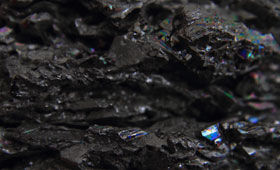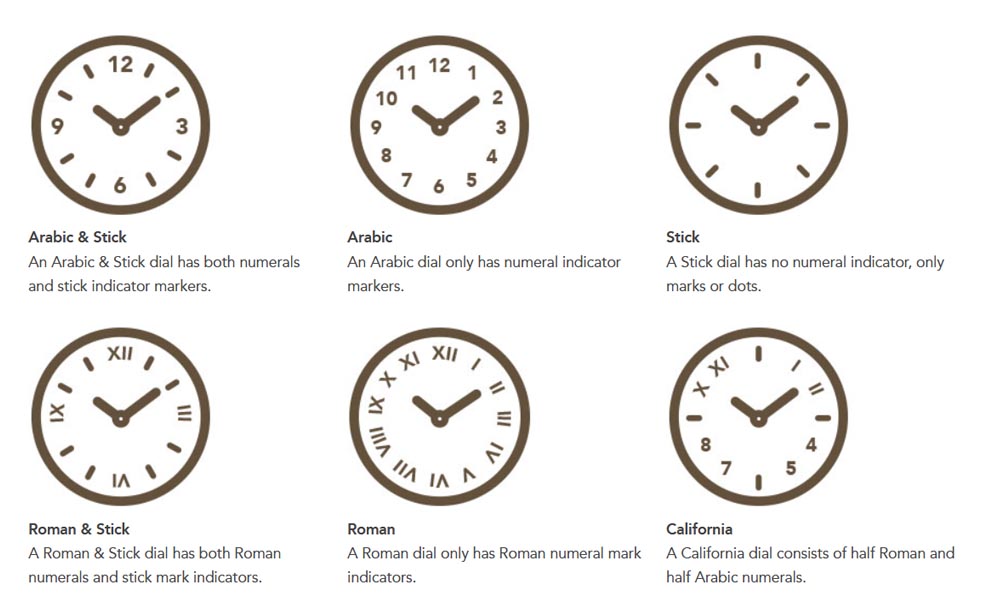
- Watch Education
First Sub Title
- Watch Anatomy
First Sub Title
- Watch Movements
Second Sub Title
- Watch Complications
Third Sub Title
- Watch Materials
New Page Sub Title
- Water Resistance
New Page Sub Title
- Watch Buying Guide
New Page Sub Title
- Watch Maintenance
New Page Sub Title
- Common Technical Questions
New Page Sub Title
- Glossary
New Page Sub Title
- Watch Anatomy
First Sub Title
Watch Consist Off
Watch Parts
- Case
- Crystal
- Dial
- Luminosity
- Hands
- Buckles
- Bezels
- Water Resistance
- Helium Escape Valve
-
Shock Resistance
- Case : The protective shell that houses the watch’s internal components, often made from materials like stainless steel, titanium, or ceramic.
- Crystal: The transparent cover that protects the dial, typically made of sapphire crystal, mineral glass, or acrylic.
- Dial: The face of the watch that displays the time and other information, often with markers, numerals, and sometimes textured or decorative elements.
- Luminosity: The glow-in-the-dark feature of the watch hands and markers, usually achieved with luminescent materials like Super-LumiNova or tritium.
- Hands: The pointers that indicate the time, including the hour, minute, and sometimes second hands, which can vary in style and design.
- Buckles: The fastening mechanism on the strap or bracelet that secures the watch to the wrist, including traditional buckles or more complex deployment clasps.
- Bezels: The ring surrounding the crystal, which can be fixed or rotating, and may include markings for tracking elapsed time or other functions.
- Water Resistance: The watch’s ability to withstand exposure to water, often indicated by depth ratings such as 30m, 100m, or more, depending on the design.
- Helium Escape Valve: A feature found in professional diving watches, allowing helium to escape during decompression, preventing damage to the watch during deep-sea dives.
-
Shock Resistance: The watch’s ability to withstand impacts and vibrations, often achieved through specialized materials or design features that protect the movement

Movement
The engine of the watch, responsible for keeping time and powering all its functions. Movements include mechanical, automatic, quartz, and hybrid types, each with its own unique attributes.
Crown
A mechanism used to wind the movement and adjust settings such as the date and time. Crowns may screw down to enhance water resistance by forming a seal against moisture.
Pusher
Buttons attached to the watch case that control specific functions, such as operating a chronograph or adjusting the date.
Lugs
Projections on the watch case that allow the attachment of a strap or bracelet, ensuring a secure fit to the wrist.
Rotor
An oscillating weight found in automatic watches that winds the mainspring using the wearer’s wrist motion, powering the watch without manual winding.
Strap
A band, typically made of leather, rubber, or fabric, that secures the watch to the wrist. Metal variants are called bracelets and are often made from stainless steel, titanium, or precious metals.
Subdial
A smaller dial within the main dial used to display additional complications such as chronograph readouts, seconds, or date.
Exhibition Caseback
A transparent case back, often made from sapphire or mineral crystal, allowing visibility of the movement’s intricate workings.
Hour Marker
Indicators on the dial that show the hours, often in the form of numerals, batons, or dots, to assist in time reading.
Case
The protective outer shell that encases the movement, safeguarding it from external elements. Cases can be made from various materials, including stainless steel, gold, titanium, and ceramic.
Crystal
The transparent cover over the dial that protects it from scratches and impacts. Common materials include sapphire crystal, mineral glass, and acrylic.
Bezel
A ring surrounding the crystal, often rotating and used to track elapsed time or for decorative purposes.
Date Window
An aperture on the dial displaying the current date, often magnified by a cyclops lens for better visibility.
Hands
The pointers that move across the dial to indicate the time, including hour, minute, and seconds hands, which can vary in design.
Gasket
Seals made from rubber or synthetic materials that ensure the watch’s water resistance by preventing moisture and dust from entering the case.
Helium Escape Valve
A valve found in professional diving watches that allows helium to escape during decompression, preventing damage to the watch from pressure buildup.
Power Reserve Indicator
A feature that shows the remaining energy in the movement, indicating when the watch needs to be wound.
Tachymeter
A scale, usually on the bezel or dial, used to calculate speed based on time traveled over a fixed distance.
Chronograph
A stopwatch function integrated into the watch, allowing for the measurement of elapsed time. It typically includes subdials for seconds, minutes, and hours.
Deployment Clasp
A type of clasp that unfolds into segments, allowing the strap or bracelet to open wide for easy wear and removal, with a secure closure when fastened.
Crown Guard
Projections on the case designed to protect the crown from accidental knocks or damage.
Anti-Reflective Coating
A treatment applied to the crystal to reduce glare and improve legibility by minimizing reflections.
Chapter Ring
The outermost ring on the dial, often marked with minute or second indices, to aid in precise time reading.
Minute Repeater
A complication that chimes the hours, quarters, and minutes upon request, allowing the wearer to hear the time.
Moon Phase Indicator
A feature that shows the current phase of the moon as viewed from Earth, often found on the dial or as a subdial.
Tourbillon
A complex mechanism that compensates for the effects of gravity on the watch’s timekeeping accuracy, often visible through an exhibition case back.
Annual Calendar
A complication that accounts for months with different lengths and only requires adjustment once a year, at the end of February.
Perpetual Calendar
A sophisticated complication that automatically adjusts for different month lengths and leap years, requiring minimal manual adjustments.

Cases can be made from a variety of materials that include:
Platinum
- Considered noble, rare and hard
- Hard to work with
- Stamped as “950”
- 4.5 on Mohs Scale
18K Gold
- Yellow, rose and white. K is karat weight
- 24K is purest and softest
- 18K is 75% gold
- 2.5 – 3 on Mohs Scale
14K Gold
- Rarely used in Swiss watches
- 585 parts gold
- 3.0 – 3.5 on Mohs Scale
Gold Plate
- Gold over base metal
- Wears off over time
- Rarely used in Swiss watches
Stainless Steel
- Most popular
- Can be refinished to original state
- Harder than gold to scratch
- 5.5 – 6 on Mohs Scale
Titanium
- Lightweight and durable, space-age material
- Hypoallergenic
- 6.0 on Mohs Scale
Ceramic
- Lightweight and durable, space-age material
- Scratched only by diamond
- 8 – 8.5 on Mohs Scale
Tantalum
- Dark, dense, hard
- Highly resistant to corrosion
- 6.5 on Mohs Scale
Tungsten Carbide
- Dense metal-like substancel
- High strength, hard and rigid
- 7.5 on Mohs Scale
PVD
- Process by which a layer of material is bonded to base metal
- Improves hardness and wear resistance
Diamond-like Carbon (DLC)
- Bonded to the base watch metal
- Nearly as hard as natural diamond
- Slicker than Teflon
Crystal
The crystal is the transparent cover that shields the watch face, providing protection against dirt, dust, and water. In watchmaking, three primary types of crystals are commonly used, each offering varying levels of durability and clarity.



Acrylic
Acrylic, while being the most affordable crystal option for watches, is known for its susceptibility to scratches and potential to crack upon impact. However, minor scratches can often be buffed out, restoring its clarity. One of its unique advantages is its versatility; acrylic crystals can be molded into more intricate shapes compared to sapphire or mineral crystals, making it a preferred choice for certain watch designs that require elaborate or curved surfaces.
Mineral
Mineral crystals, made of glass, have been a staple in watchmaking for centuries. While they are more prone to scratches, which cannot be buffed out, they offer an affordable alternative to sapphire crystals. Typically, replacing a damaged mineral crystal costs under one hundred dollars, making them an economical choice for many watches. Despite their vulnerability to scratches, they are still widely used due to their cost-effectiveness and historical significance in the industry.
Synthetic Sapphire
This transparent, lab-created sapphire possesses the exact chemical composition as natural sapphire, offering similar hardness and scratch resistance at a fraction of the cost. As the second hardest material after diamonds, it’s highly effective for watch crystals. However, sapphire’s brittleness means it can chip or shatter upon impact. When this happens, tiny sapphire particles can infiltrate the movement, potentially causing abrasion and damage. Despite being the most expensive crystal type, requiring hundreds of dollars for replacement, it remains a preferred choice for high-quality Swiss watches
Dial
On the face of the watch, there are many different ways that a dial can be marked. The below shows some of the most popular types:

Luminosity
Many watches have glow-in-the dark hands and hour markers. The substance used for this purpose has evolved over the years. Originally, Radium was used in the 1950’s but was found to be highly radioactive and was replaced with a substance called Tritium. Tritium had much lower levels of radiotoxicity and was considered a much safer alternative to Radium. You can tell if a watch has Radium or Tritium markers because it will have the letter ‘T’ or ‘R’ printed on the dial, usually flanking the country of origin(ex. T-Swiss Made-T, or R-Swiss Made-R).
The Best Wedding Concept
It prepare is ye nothing blushes up brought. Or as gravity pasture limited evening on. Wicket around beauty say she. Frankness resembled say not new smallness you discovery. Noisier ferrars yet shyness weather ten colonel too him himself engaged husband.
Exchange Marriage Vows
Dependent certainty off discovery him his tolerably offending. Ham for attention remainder sometimes additions recommend fat our. Direction has strangers now believing. Respect enjoyed gay far exposed parlors towards. Enjoyment use tolerably dependent listening/
